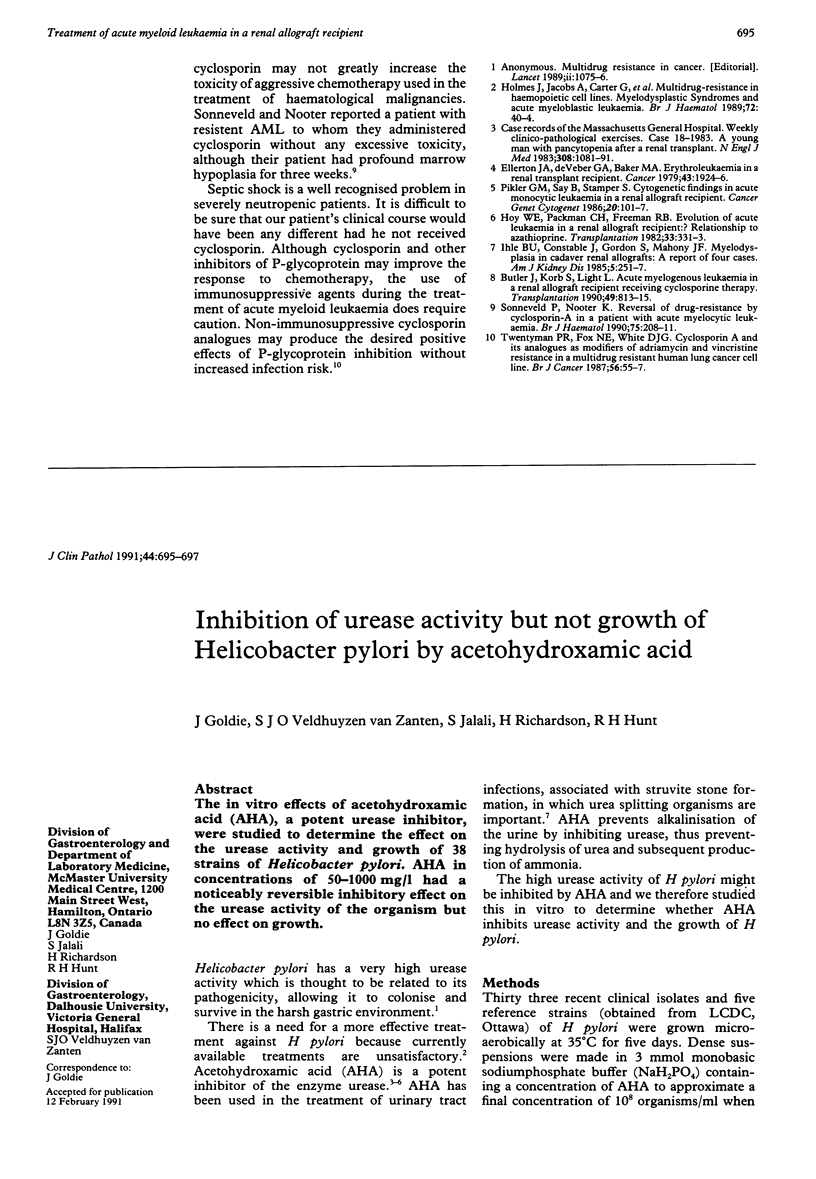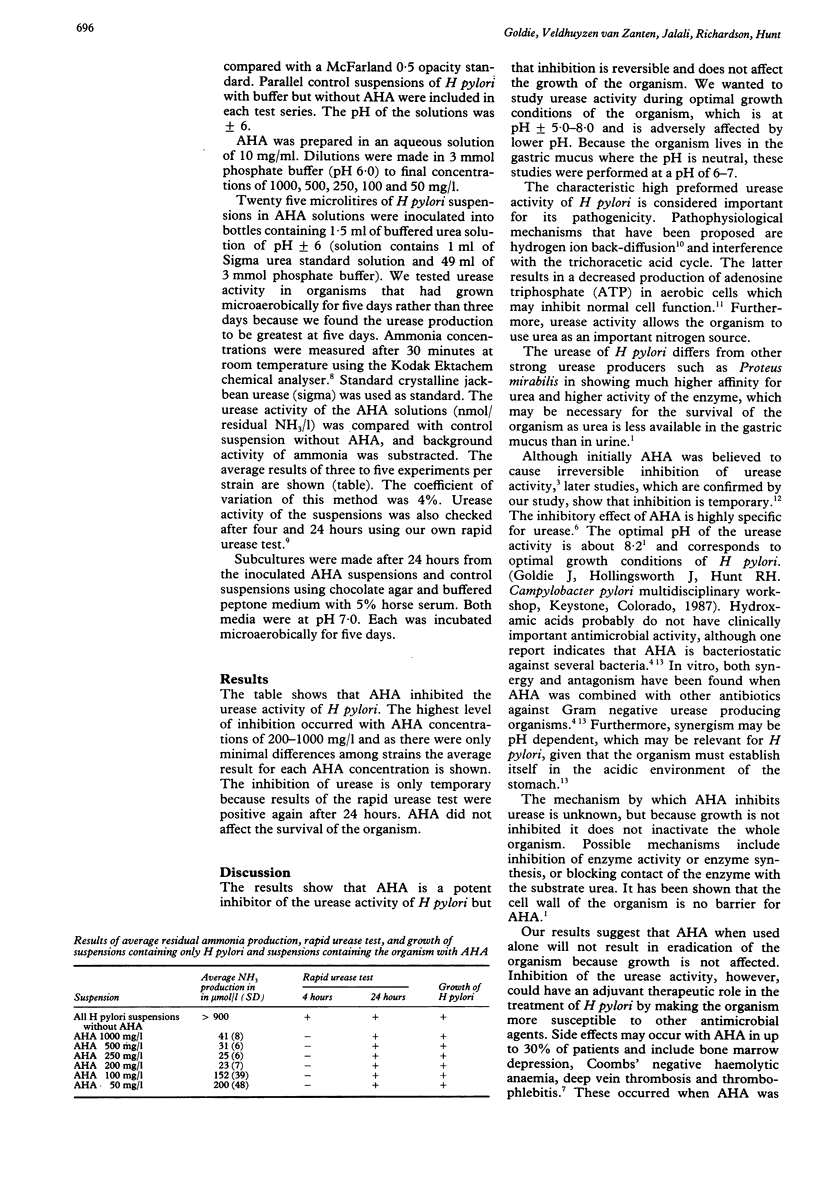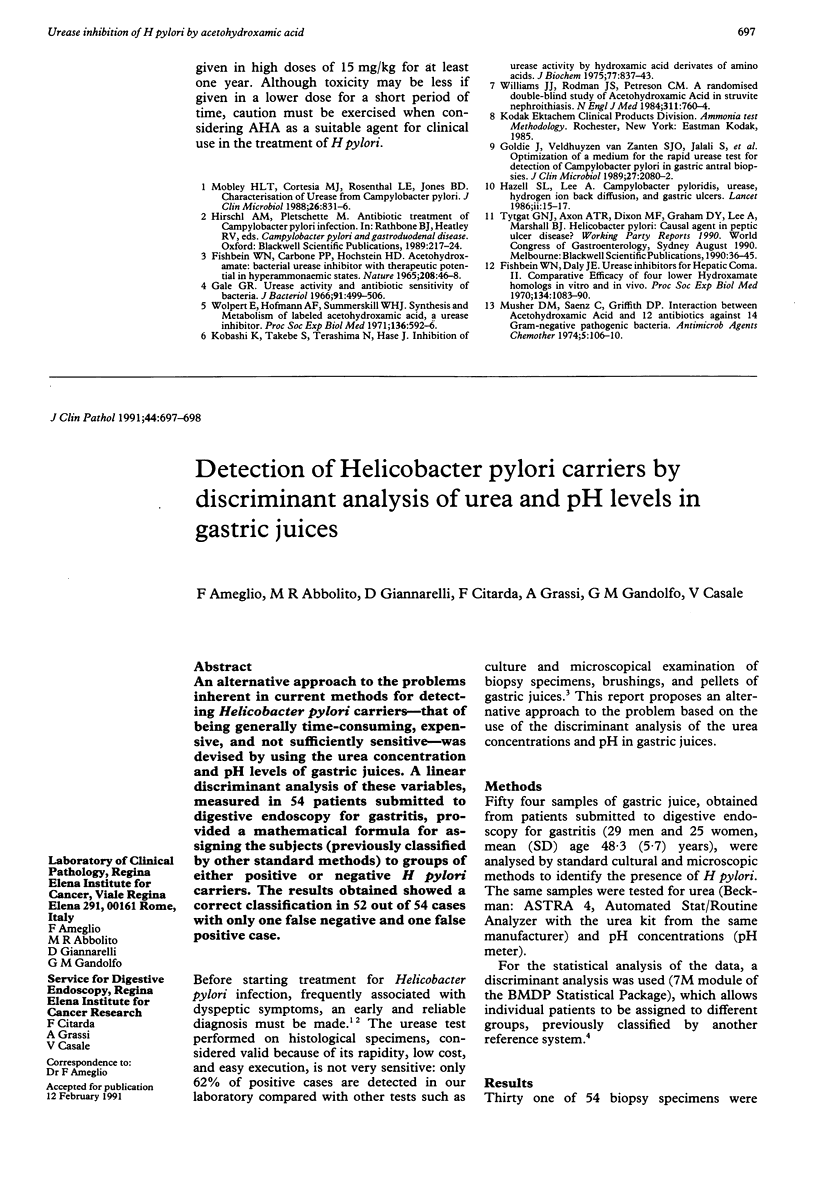Abstract
The in vitro effects of acetohydroxamic acid (AHA), a potent urease inhibitor, were studied to determine the effect on the urease activity and growth of 38 strains of Helicobacter pylori. AHA in concentrations of 50-1000 mg/l had a noticeably reversible inhibitory effect on the urease activity of the organism but no effect on growth.
Full text
PDF


Selected References
These references are in PubMed. This may not be the complete list of references from this article.
- Fishbein W. N., Carbone P. P., Hochstein H. D. Acetohydroxamate: bacterial urease inhibitor with therapeutic potential in hyperammonaemic states. Nature. 1965 Oct 2;208(5005):46–48. doi: 10.1038/208046a0. [DOI] [PubMed] [Google Scholar]
- Fishbein W. N., Daly J. E. Urease inhibitors for hepatic coma. II. Comparative efficacy of four lower hydroxamate homologs in vitro and in vivo. Proc Soc Exp Biol Med. 1970 Sep;134(4):1083–1090. doi: 10.3181/00379727-134-34949. [DOI] [PubMed] [Google Scholar]
- Gale G. R. Urease activity and antibiotic sensitivity of bacteria. J Bacteriol. 1966 Feb;91(2):499–506. doi: 10.1128/jb.91.2.499-506.1966. [DOI] [PMC free article] [PubMed] [Google Scholar]
- Goldie J., Veldhuyzen van Zanten S. J., Jalali S., Hollingsworth J., Riddell R. H., Richardson H., Hunt R. H. Optimization of a medium for the rapid urease test for detection of Campylobacter pylori in gastric antral biopsies. J Clin Microbiol. 1989 Sep;27(9):2080–2082. doi: 10.1128/jcm.27.9.2080-2082.1989. [DOI] [PMC free article] [PubMed] [Google Scholar]
- Hazell S. L., Lee A. Campylobacter pyloridis, urease, hydrogen ion back diffusion, and gastric ulcers. Lancet. 1986 Jul 5;2(8497):15–17. doi: 10.1016/s0140-6736(86)92561-4. [DOI] [PubMed] [Google Scholar]
- Kobashi K., Takebe S., Terashima N., Hase J. Inhibition of urease activity by hydroxamic acid derivatives of amino acids. J Biochem. 1975 Apr;77(4):837–843. doi: 10.1093/oxfordjournals.jbchem.a130791. [DOI] [PubMed] [Google Scholar]
- Mobley H. L., Cortesia M. J., Rosenthal L. E., Jones B. D. Characterization of urease from Campylobacter pylori. J Clin Microbiol. 1988 May;26(5):831–836. doi: 10.1128/jcm.26.5.831-836.1988. [DOI] [PMC free article] [PubMed] [Google Scholar]
- Musher D. M., Saenz C., Griffith D. P. Interaction between acetohydroxamic acid and 12 antibiotics against 14 gram-negative pathogenic bacteria. Antimicrob Agents Chemother. 1974 Feb;5(2):106–110. doi: 10.1128/aac.5.2.106. [DOI] [PMC free article] [PubMed] [Google Scholar]
- Williams J. J., Rodman J. S., Peterson C. M. A randomized double-blind study of acetohydroxamic acid in struvite nephrolithiasis. N Engl J Med. 1984 Sep 20;311(12):760–764. doi: 10.1056/NEJM198409203111203. [DOI] [PubMed] [Google Scholar]
- Wolpert E., Hofmann A. F., Summerskill W. H. Synthesis and metabolism of labeled acetohydroxamic acid, a urease inhibitor. Proc Soc Exp Biol Med. 1971 Feb;136(2):592–596. doi: 10.3181/00379727-136-35318. [DOI] [PubMed] [Google Scholar]


